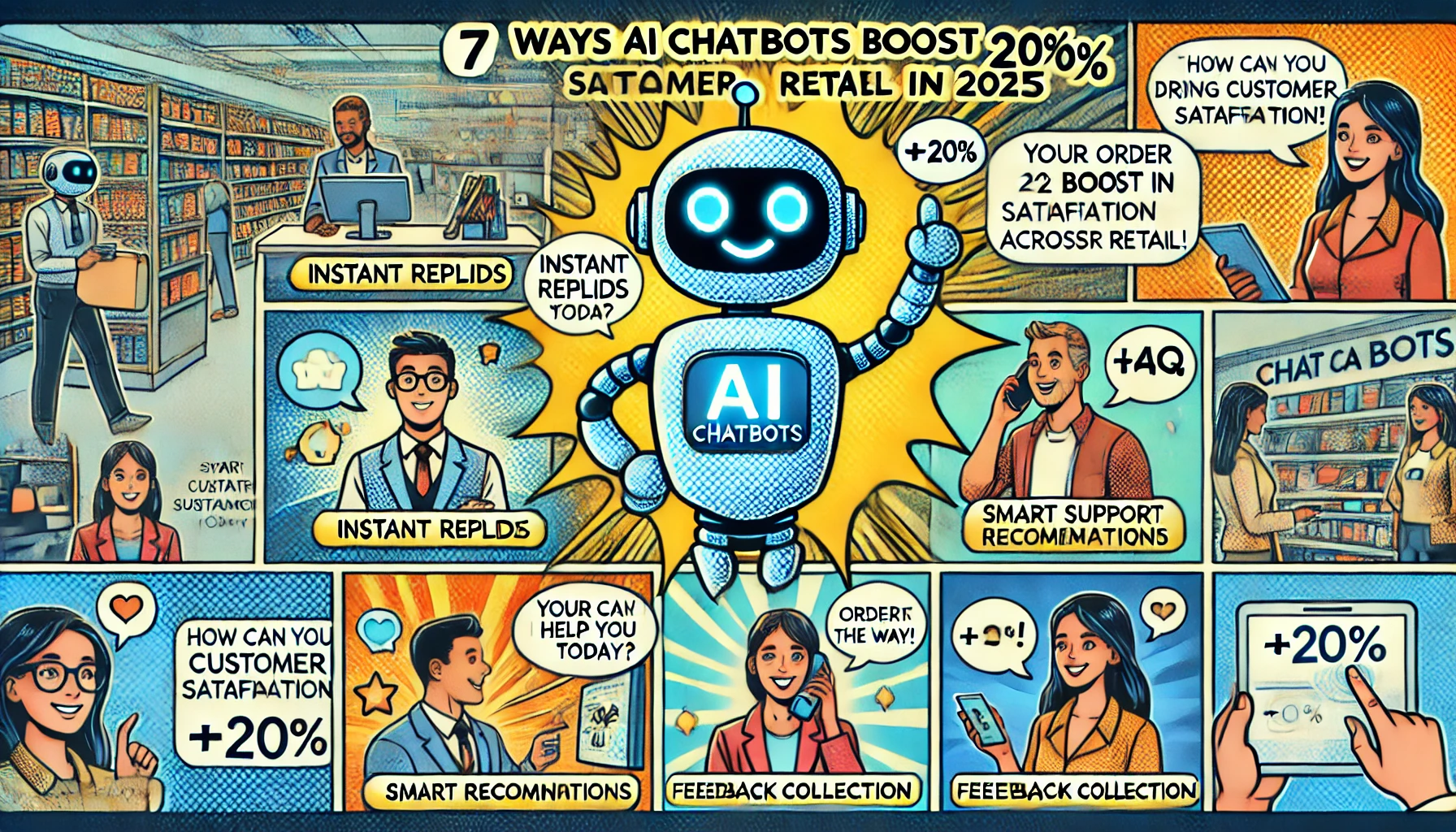Chatbot Integration Boosts Customer Satisfaction by 20% in Retail Sector
A new report from Customer Experience Times, published in April 2025, shows that AI-powered chatbots are improving how stores help their customers. The study found that retail companies using these chatbots had a 20% boost in how satisfied their customers were. These smart helpers are being used on websites, apps, and even in-store kiosks.
Over 300 retail businesses across North America, Europe, and Asia took part in the study. They used AI chatbots to answer questions, help with online returns, give shoppers advice about products, and even provide tracking updates. The results showed customers liked getting help faster, any time of day. More than ever, people want quick, helpful service, and chatbots are delivering just that. As more businesses move online and deal with higher customer demand, the need for AI support continues to grow.
Chatbots are not new, but they have become much more useful in recent years. In the past, they could only answer very simple questions and often gave robotic replies. Thanks to artificial intelligence (AI), today’s chatbots are much better at understanding what people ask and giving helpful, human-like answers. This improvement comes from advanced natural language processing, which helps chatbots understand the way people really speak.
During the COVID-19 pandemic, many people started shopping from home, and stores had to find better ways to serve their customers online. Human workers couldn’t answer every question at once, especially during busy sales or holiday seasons. That’s when many companies started using AI chatbots to handle large numbers of customer chats at the same time. These tools became a fast, reliable way to provide support, even when stores were closed. Since then, chatbots have only improved and are now used in both small businesses and large chains alike.
Key Facts & Details
How Chatbots Help Stores and Shoppers:
- Always Available: AI chatbots are ready 24 hours a day, 7 days a week. Customers can get help whenever they need it—even late at night or early in the morning. This is especially useful for online stores with customers in different time zones.
- Instant Responses: Chatbots answer questions in seconds, which means customers don’t have to wait in long lines or on hold. This helps reduce customer frustration and encourages them to keep shopping.
- Help with Common Problems: Many shoppers ask similar questions, like “Where is my order?” or “How can I return this item?” Chatbots can answer these quickly so employees can help with more difficult problems. This also cuts down on customer emails and phone calls.
- Personalized Help: Some chatbots can remember what a customer likes or has bought before. They can recommend new products based on shopping history, just like a store clerk might do. This makes the shopping experience more fun and personal.
- Multilingual Support: Advanced chatbots can talk in more than one language, making it easier for stores to help customers from different parts of the world. This helps global companies provide consistent service.
- Handles Many Customers at Once: Unlike human workers, AI chatbots can handle hundreds of conversations at the same time, so no one is left waiting.
What the Experts Are Saying: “AI chatbots help our team support more people without long wait times,” said Jasmine Ng, who works at TrendyWear, a popular clothing brand. “This means our workers can focus on more complex customer needs and provide better service overall.”
Dr. Leo Martinez, a tech expert from the RetailTech Institute, added, “Chatbots today are smarter and more helpful. They can even learn from past conversations and improve with time. In the next few years, we expect even more advanced chatbot systems to appear.”
Key Numbers from the Report:
- Customer satisfaction improved by 20% in companies using AI chatbots.
- 65% of customers said they liked using chatbots for fast answers.
- Chatbots cut average wait times by 60%.
- 73% of companies had fewer support emails after adding chatbots.
- 52% of businesses saw a rise in return visits from customers who used a chatbot.
- 47% of online shoppers said chatbot help led them to make a purchase.
- 58% of customer service teams reported lower stress levels after chatbot tools were added.
Analysis & Impact
How AI Chatbots Are Changing Customer Service:
- Faster Service for Everyone: Chatbots help customers get the answers they need right away. This improves the overall shopping experience and saves people time, especially when they’re in a rush.
- Support for Human Workers: Chatbots can’t do everything, but they take care of basic problems so human workers can handle more serious issues. This creates a better work balance and helps companies get more done.
- More Sales and Happy Customers: When customers get quick help and good suggestions, they’re more likely to buy something—and come back again. This builds brand trust and customer loyalty.
- Useful During Busy Seasons: During big sales or holidays, stores get lots of customer questions. Chatbots can handle the rush better than a small customer service team. This helps avoid delays and keeps things running smoothly.
- Helps Smaller Businesses Compete: Even smaller companies with limited staff can provide great customer service by using chatbots to answer questions and make product suggestions.
Challenges and Risks:
- Still Learning: While AI chatbots are helpful, they sometimes don’t understand complicated questions. Customers may get frustrated if the bot can’t give the right answer or keeps repeating itself.
- Needs Good Setup: A poorly designed chatbot might give wrong answers or confuse shoppers. Stores must take time to train and update their chatbots regularly to make sure they work well.
- Privacy and Safety: Since chatbots use customer data, companies must keep that data private and follow the law. This includes protecting names, addresses, and payment info from hackers or misuse.
- Some People Prefer Humans: Not everyone likes talking to a machine. Some customers still want to speak to a real person, especially for big problems or complaints. Businesses must offer both chatbot and human support options.
Resources & References
- Customer Experience Times – AI and Customer Satisfaction 2025 Report
- RetailTech Institute – Future of AI in Customer Service
- Harvard Business Review – How AI Is Reshaping Customer Support
- Forrester Research – AI Trends in the Retail Industry
- McKinsey & Company – AI Adoption in E-commerce
- Gartner Insights – 2025 Digital Retail Technology Forecast
- Chatbot Journal – User Behavior in AI Conversations 2024
AI chatbots are becoming a big part of how stores help customers. They make service faster, reduce wait times, and let employees focus on more important tasks. They also help businesses save time and money while keeping customers happy. While there are still challenges to fix, many companies are seeing better results by using AI. With more improvements on the way, chatbots are likely to become an even bigger part of how we shop in the future.
Have you ever chatted with a store’s chatbot while shopping online? Did it help you or leave you frustrated? What would make the chatbot experience even better? Share your thoughts in the comments, and don’t forget to subscribe for more news about how AI is changing the way we shop and connect!



